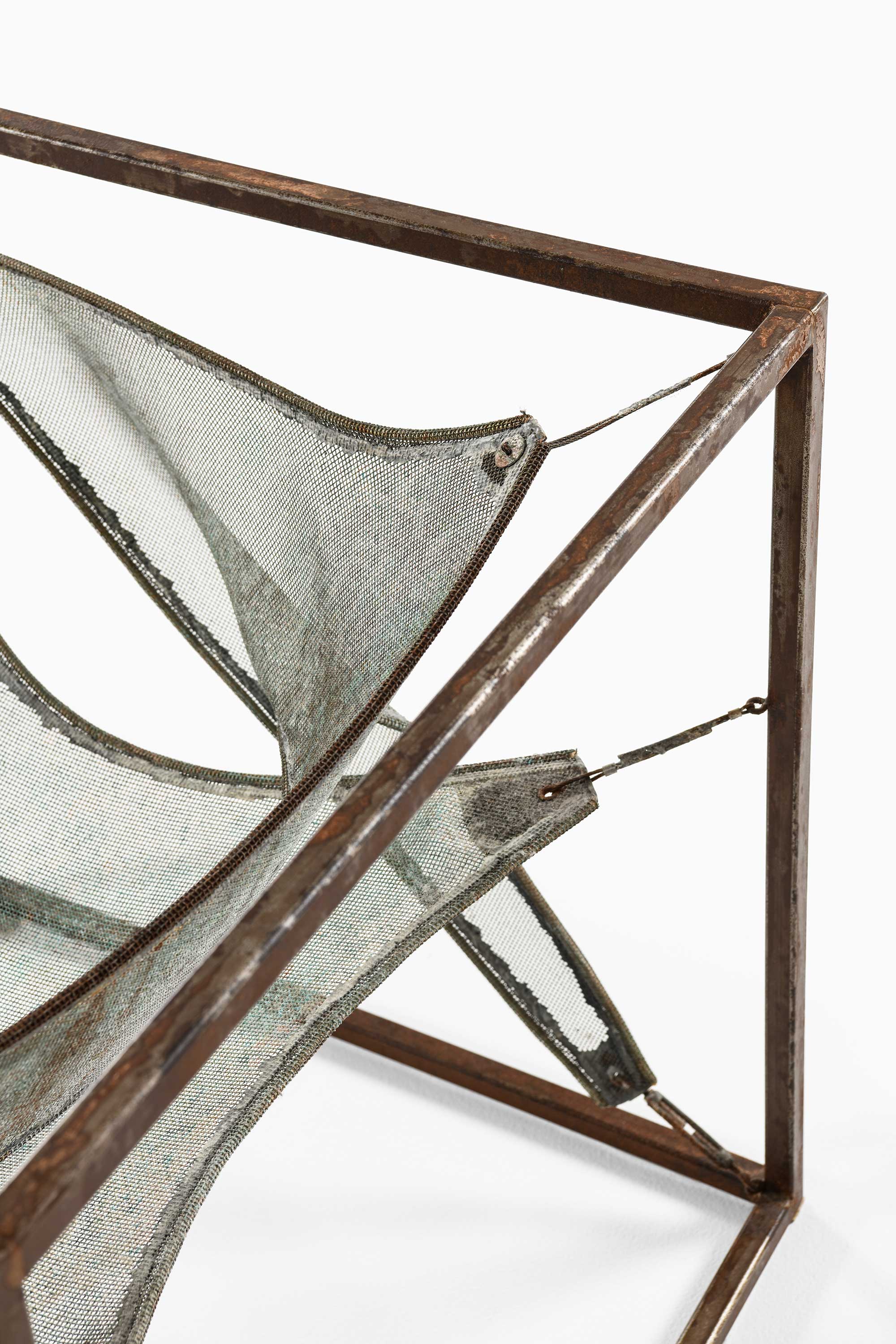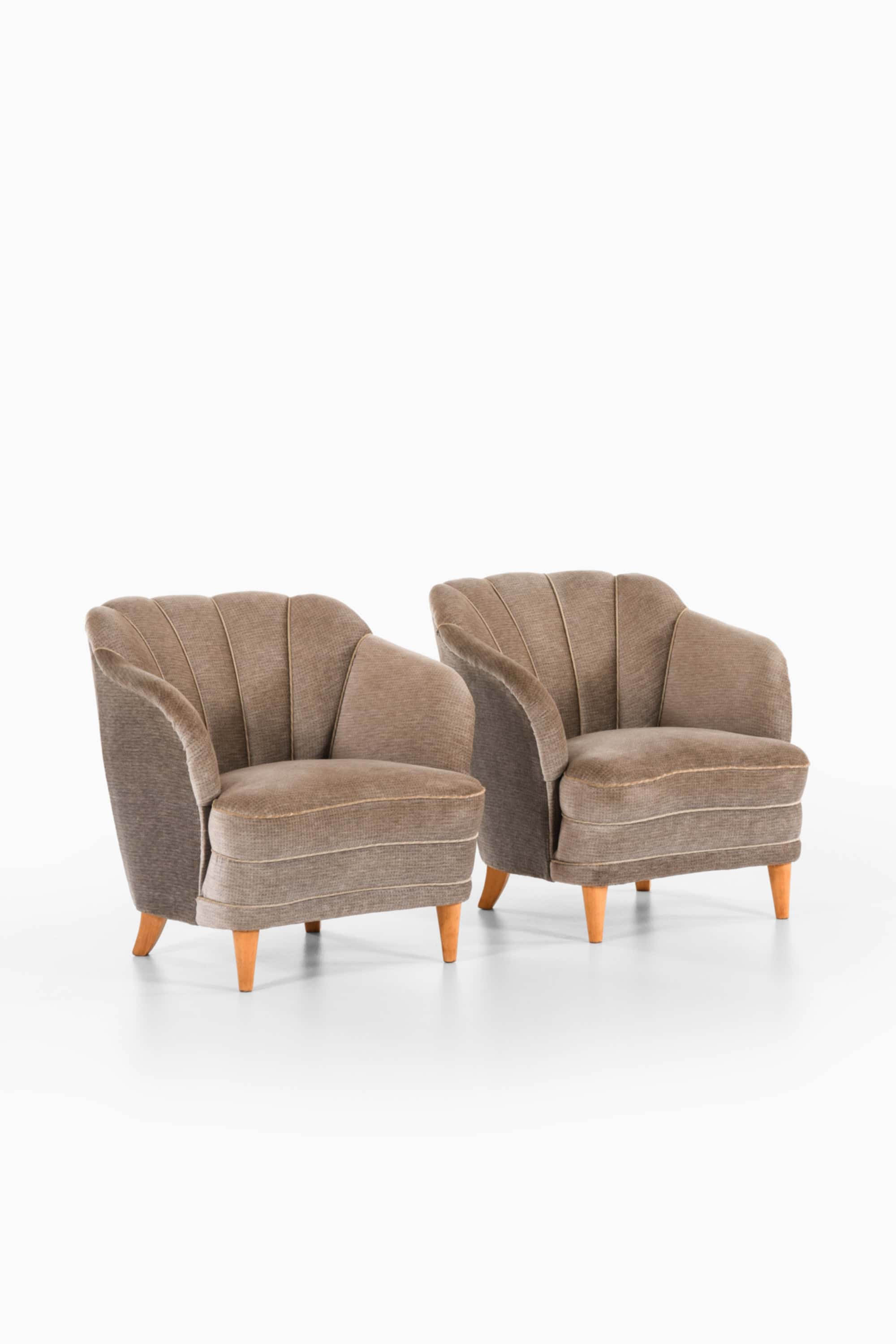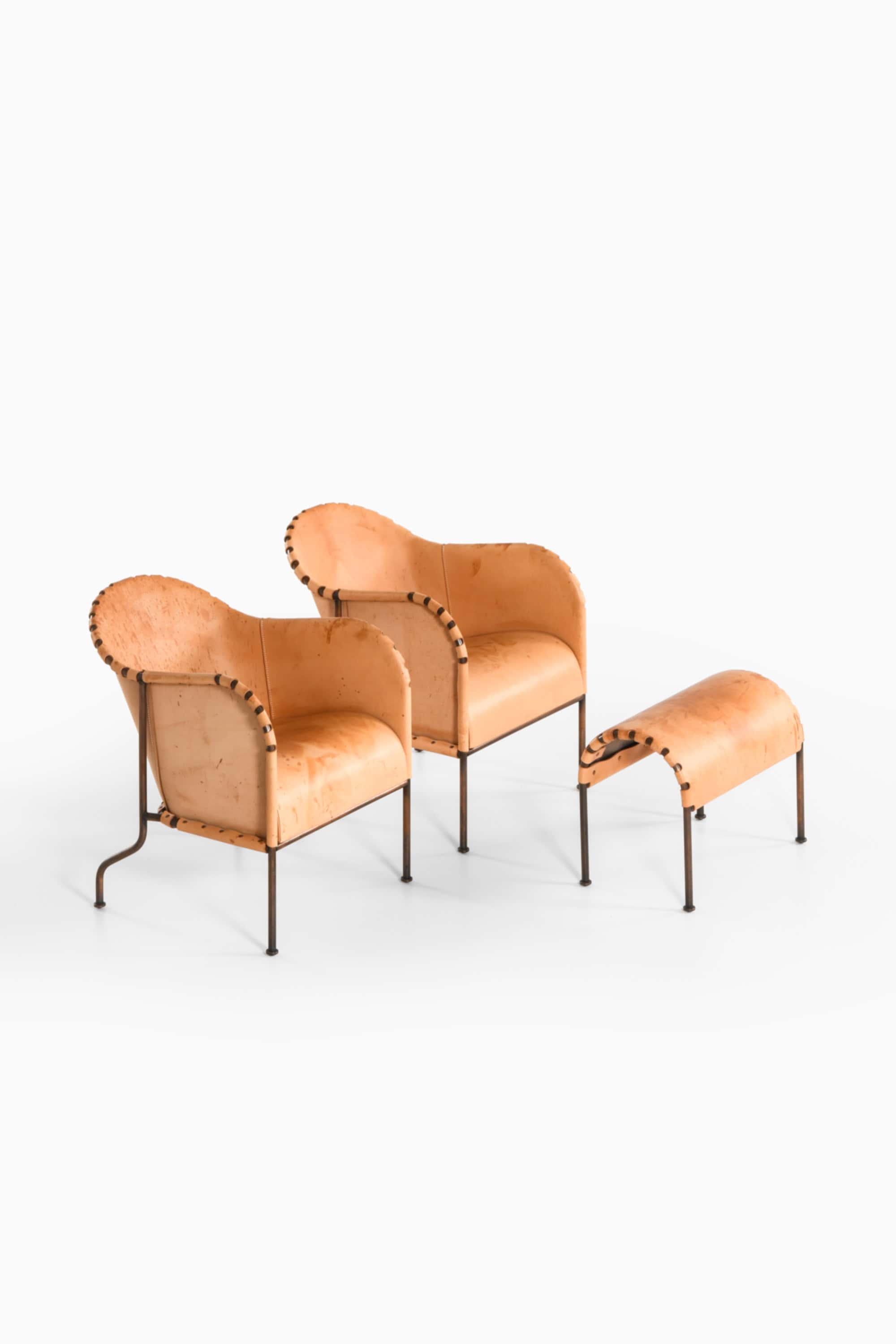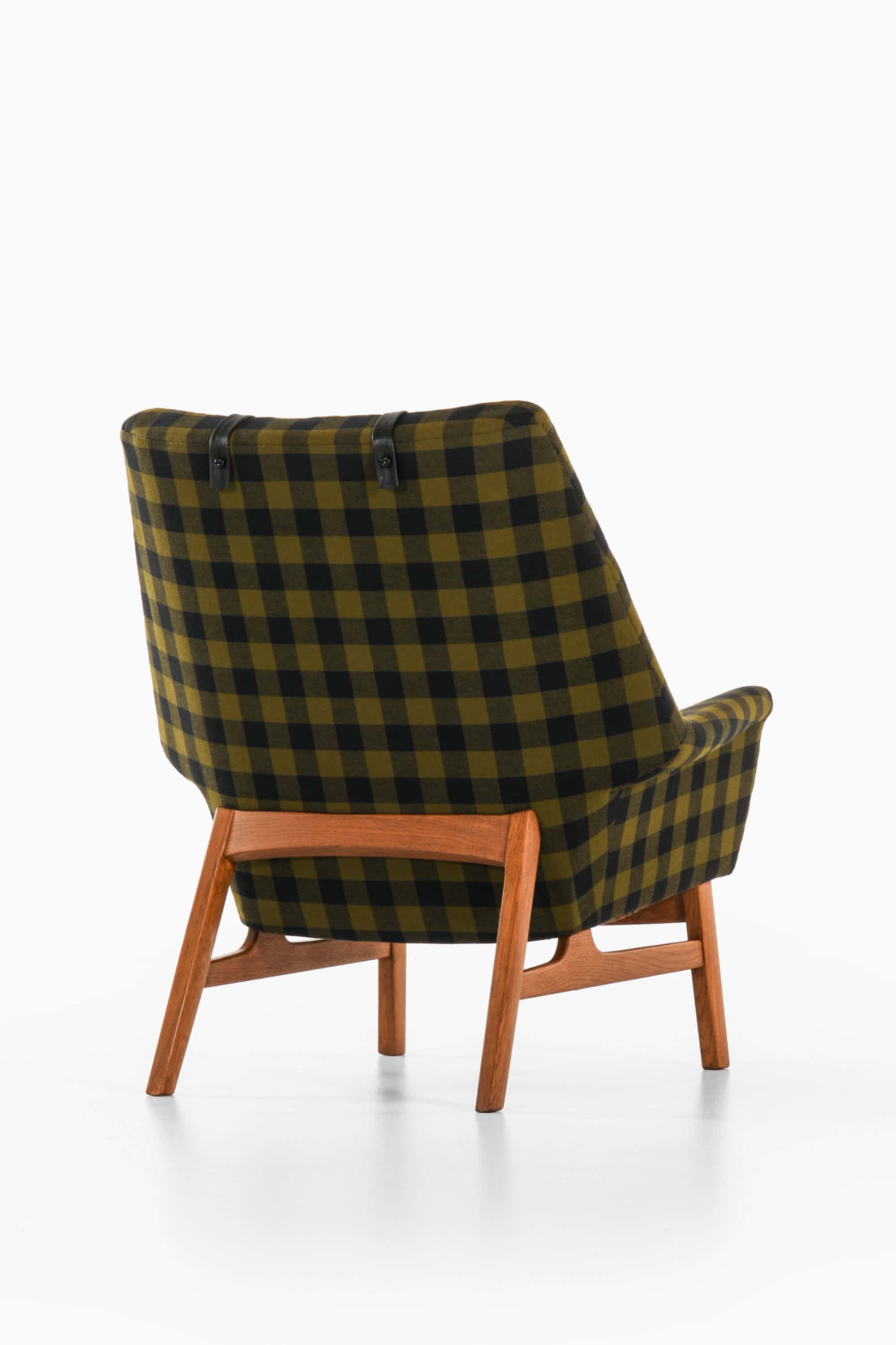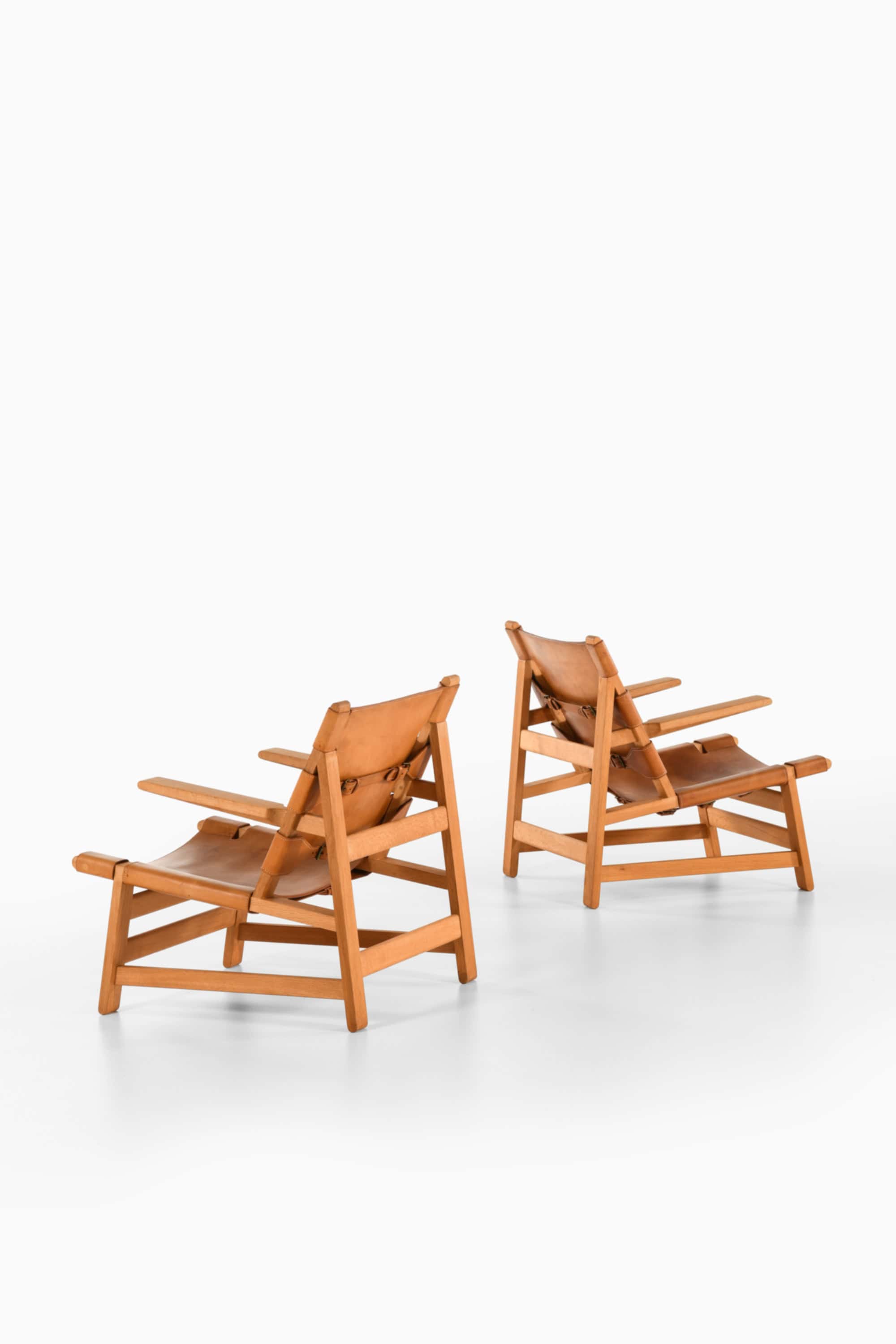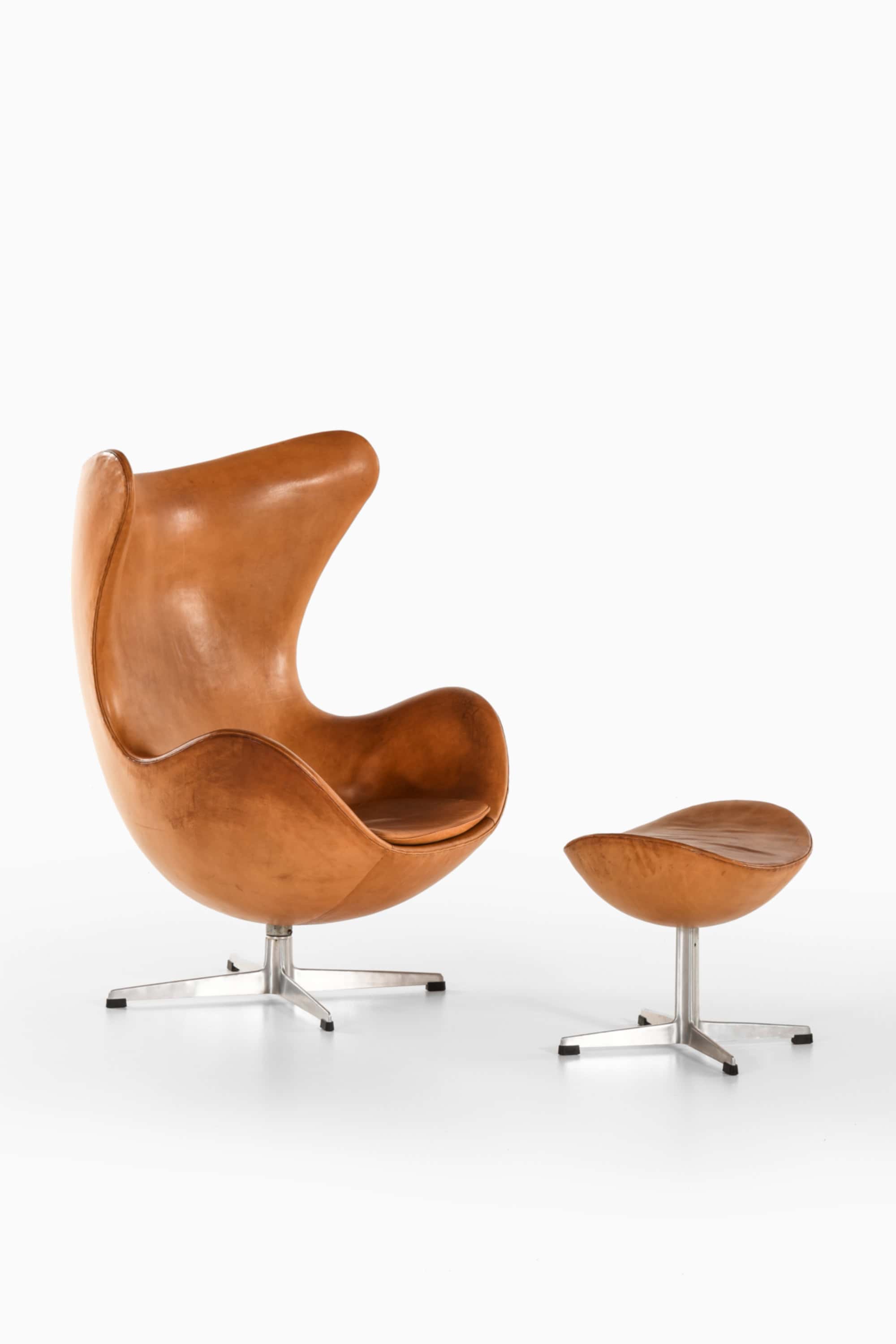Sigurdur Gustafsson easy chair
The Wind easy chair, designed by Sigurdur Gustafsson and produced by Källemo in Sweden in 2003, stands as a compelling statement piece in the realm of contemporary collectible design. This particular example—edition 21 of a strictly limited series of 33—exemplifies Gustafsson’s bold approach to material experimentation and structural minimalism, while engaging with themes of tension, transparency, and temporal decay.
At first glance, the chair presents a striking dichotomy: a rigid cube-like frame constructed from raw, rusted steel, juxtaposed against a seemingly delicate seat and backrest formed from fine metallic mesh. The steel frame asserts a heavy, industrial presence with visible oxidation and textural variation that has evolved over time into a richly patinated surface. The rust is not incidental but rather integral to the design’s identity, invoking the passage of time and the transformation of material through exposure and environment.
Within this austere geometric framework, the mesh components appear to float, giving the impression of fabric caught in motion—a sculptural rendering of wind-blown textiles held in place. The tension between the stiffened steel and the fluid contours of the mesh creates a powerful visual and conceptual contrast, challenging conventional notions of what constitutes comfort, weight, and support in seating.
Though the materials may suggest starkness, the design communicates movement and ephemeral softness. The mesh seat conforms subtly to the body, offering a surprising degree of ergonomic accommodation despite its apparent lightness. This interplay of visual fragility and physical resilience is central to Gustafsson’s vision, where sculptural intent meets functional experimentation.
Sigurdur Gustafsson (b. 1961) is a celebrated Icelandic designer and architect whose work often explores the expressive potential of raw and unconventional materials. Educated in Denmark and Norway, Gustafsson established his own studio in 1995 and began collaborating with Källemo shortly thereafter. Källemo, known for producing experimental and avant-garde furniture, provided the ideal platform for Gustafsson’s radical sensibility. His pieces frequently blur the boundaries between art and utility, emphasizing the role of time, weathering, and context in shaping the life of an object.
The Wind chair, created in the same year Gustafsson received the Torsten & Wanja Söderberg Prize and two years after being awarded the Bruno Mathsson Prize, marks a peak in his career—encapsulating his interest in materiality and conceptual provocation. As a limited edition work, each chair in the series is inherently collectible, and the restrained production run of 33 further enhances its rarity and desirability among design connoisseurs and museums alike.
In excellent structural condition, this edition retains its original materials with a naturally aged patina. The steel frame is sound and stable, while the mesh seat and backrest are intact and exhibit gentle tension with minimal wear, preserving the integrity and intention of the original design.
Dimensions (cm) | W: 66.5 / D: 67.5 / H: 67 / Seat H: 34 |
| Producer | Källemo |
| Decade | 2000s |
| Country | Sweden |
| Style | Contemporary, Industrial, Scandinavian Modern |
| Material | Steel |
| Designed in | 2003 |
| Item Number | 157692 |
Sigurdur Gustafsson






